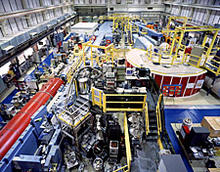NIST Center for Neutron Research (NCNR) Expansion and Reliability Improvements
(+$19 million)
Challenge

The NCNR is widely regarded as the most scientifically productive and cost-effective neutron facility in the United States, and serves more scientists and engineers than all other U.S. facilities combined. Neutron scattering techniques, in which beams of neutrons are used as probes to see the structure and movements of materials at the smallest scales are critical in a wide range of applications that will define the 21st century including nano-technology, alternative energies, and understanding the structure of biological molecules.
Because of the unique properties of neutrons for probing materials and their applications to some of the most advanced technologies, a significant shortage of neutron beam capacity and capability exists in the United States to satisfy the demands of industry and academia.
Proposed NIST Program
Begun in FY 2007, this initiative funds the second year of a planned five-year program to expand significantly the capacity and capabilities of the NCNR. The program includes the development of a new neutron cold source together with a new guide tube hall, modernization of the control system, and five new world-class neutron instruments. The specific FY 2008 funding will complete construction of the new guide hall.
Expected Impacts
The increased capacity and capability of the NCNR will enable:
- A 50 percent increase in the number of cold neutron beams suitable for use by next-generation neutron scattering instruments;
- Enhanced neutron measurement capabilities in the United States with a cold source that is two times brighter and a guide system that is four times more efficient;
- Five new, world-class instruments that are either not presently available in the United States or represent a vast improvement over present capabilities (up to 100 times); and
- An additional 500 research participants from industry and academia exploring the frontiers of nationally critical areas such as new material development, complex biological systems, alternative energy, and nanotechnology.

